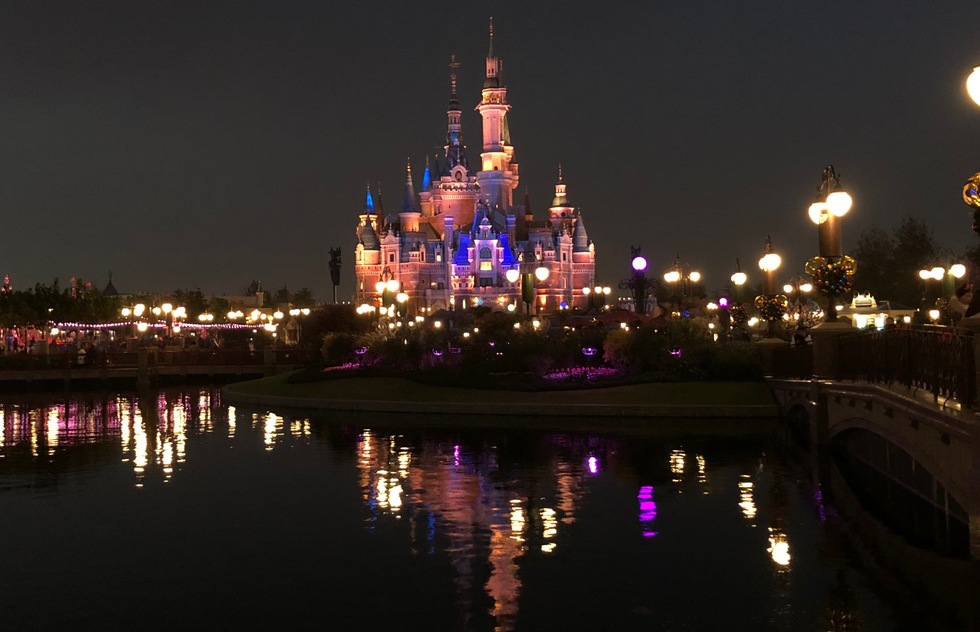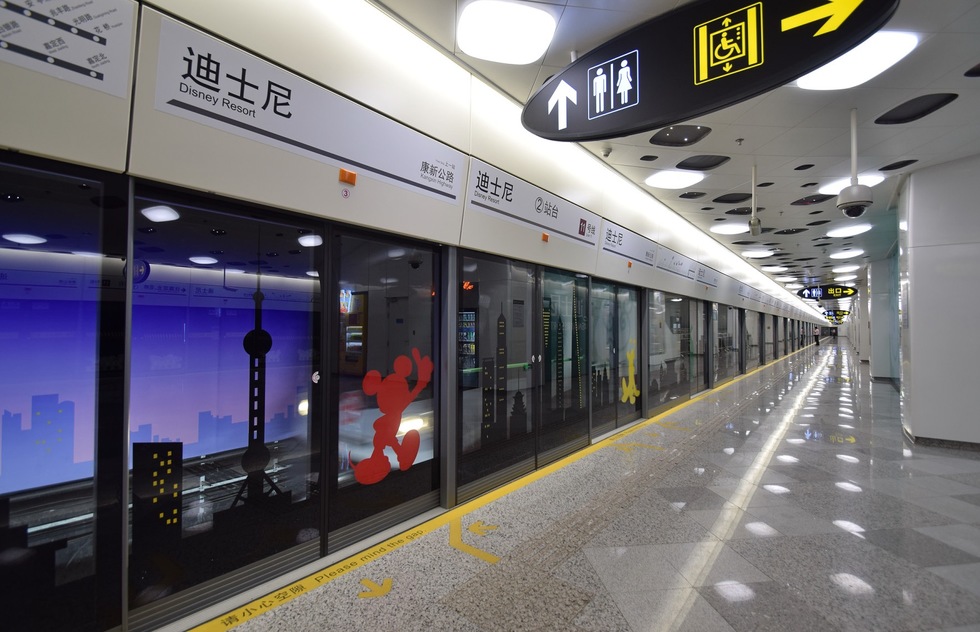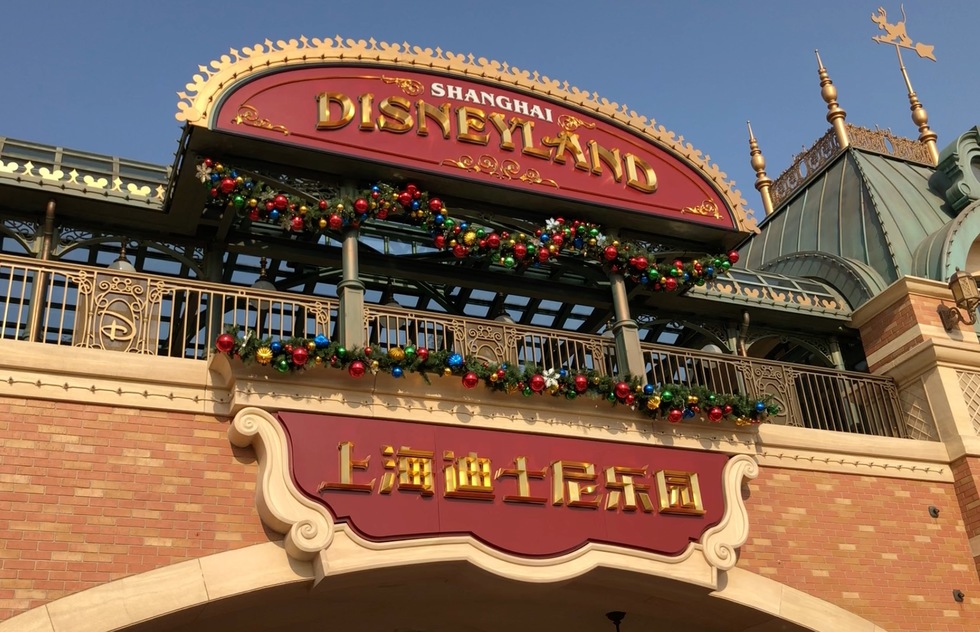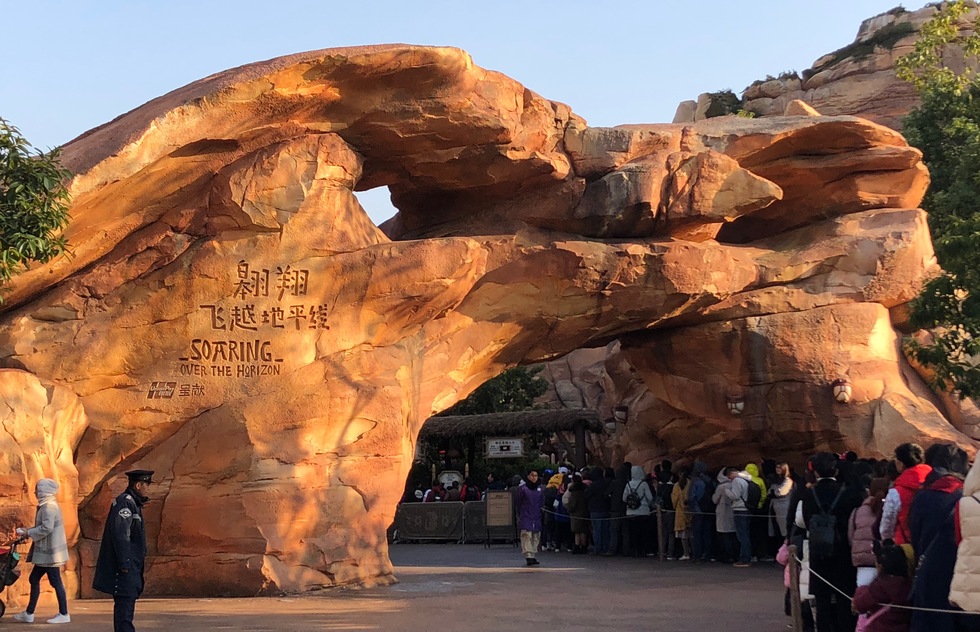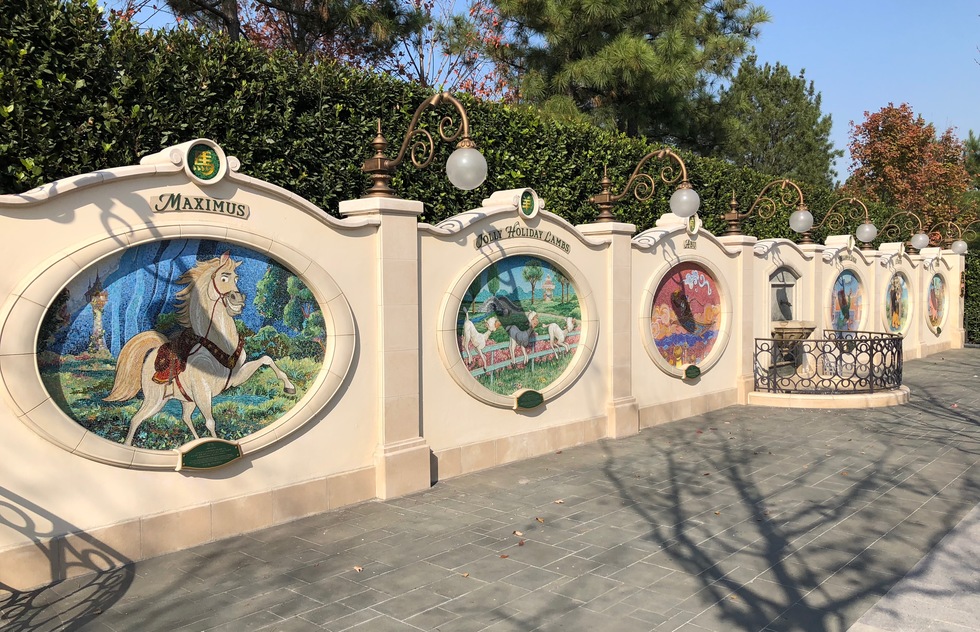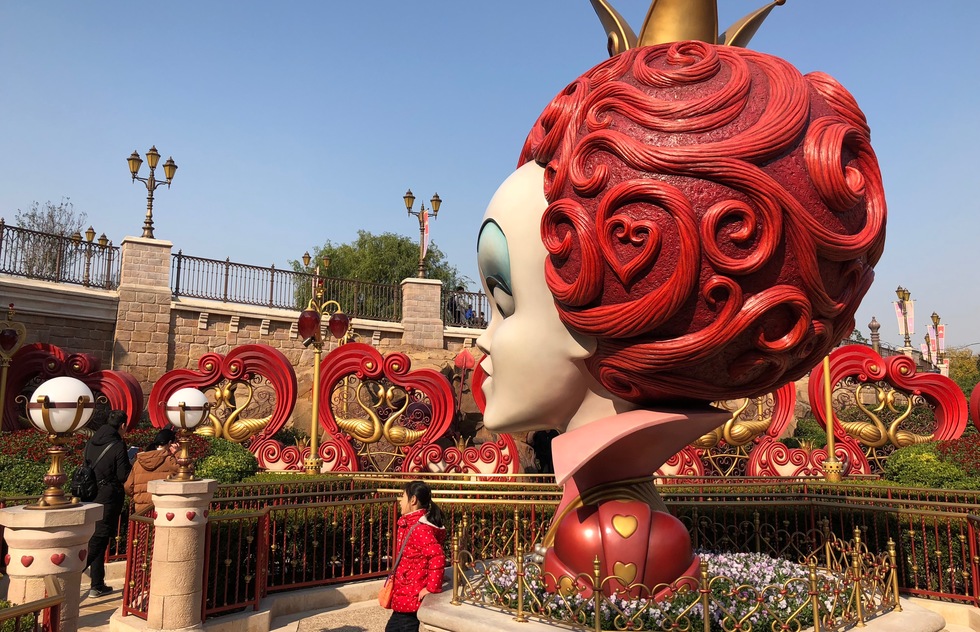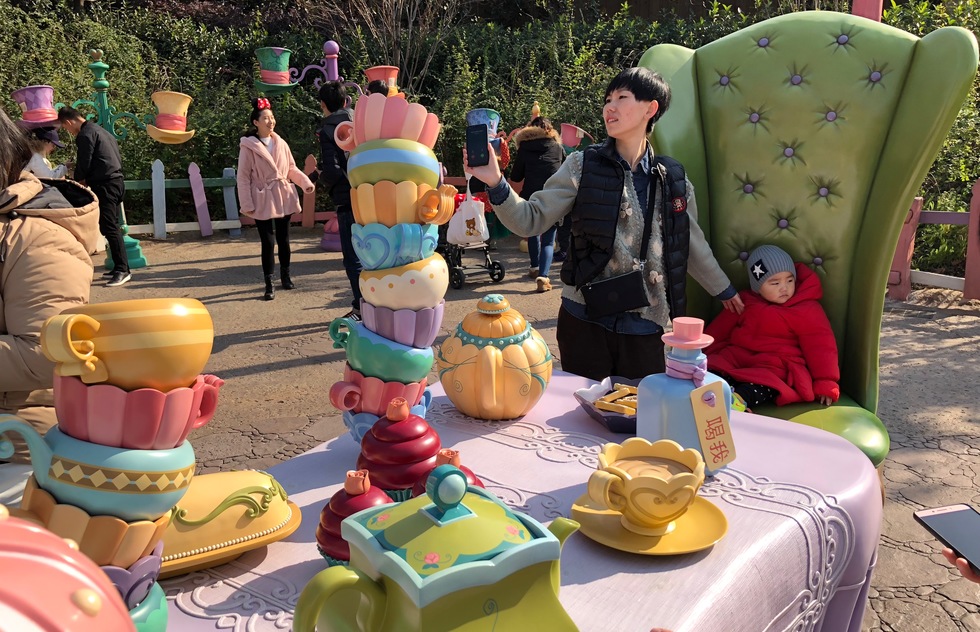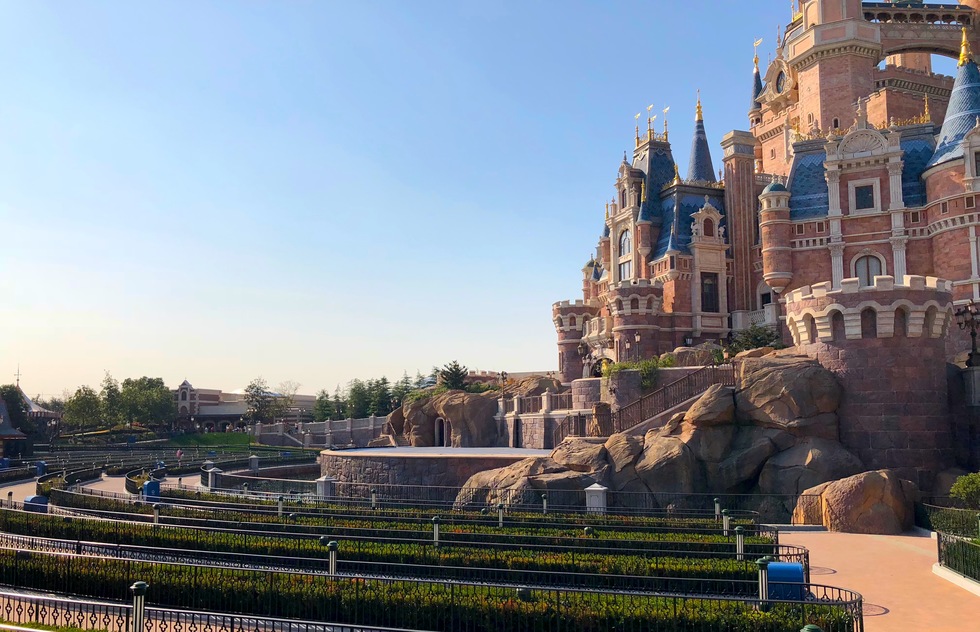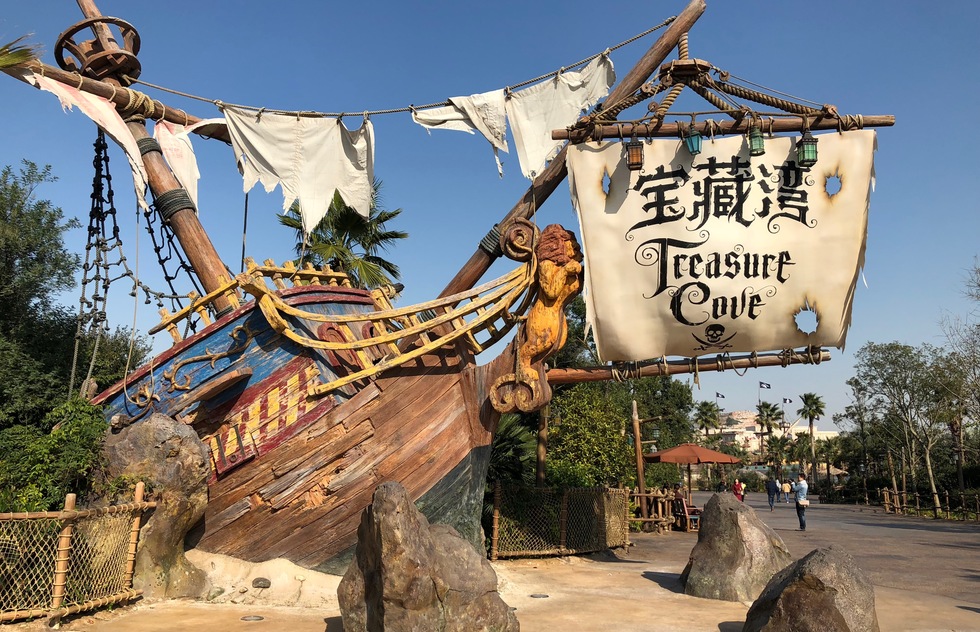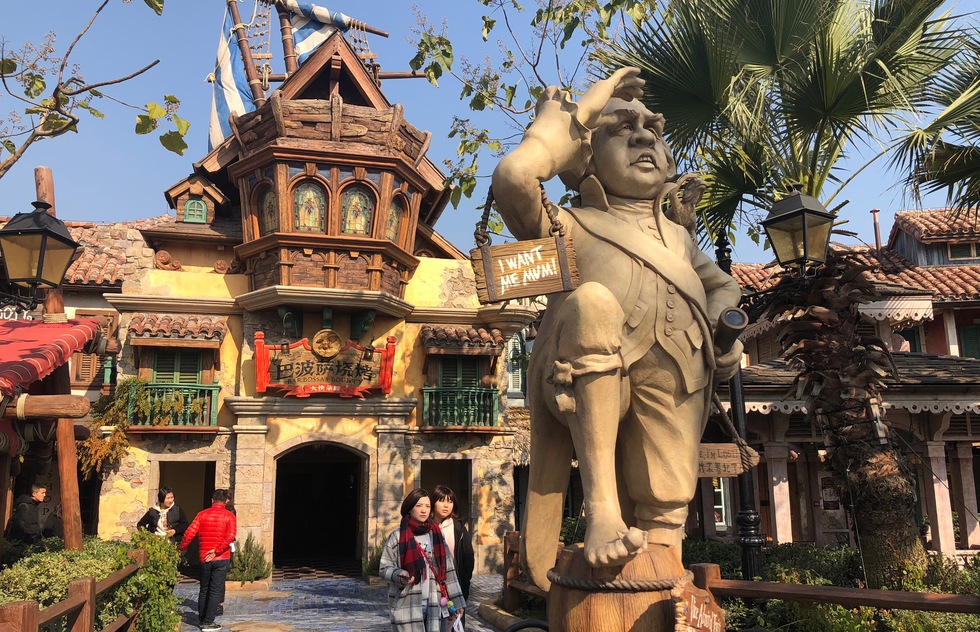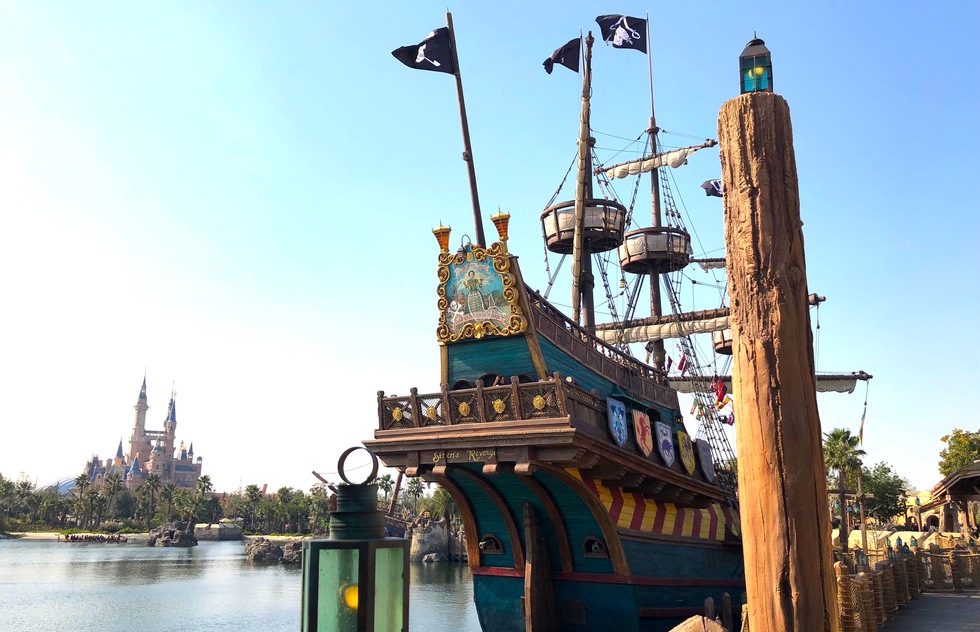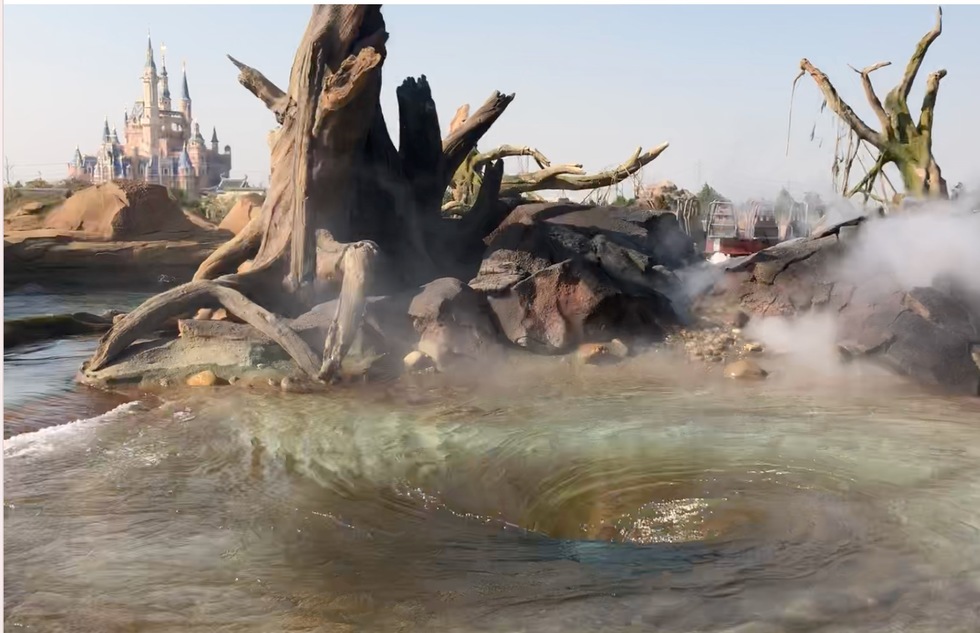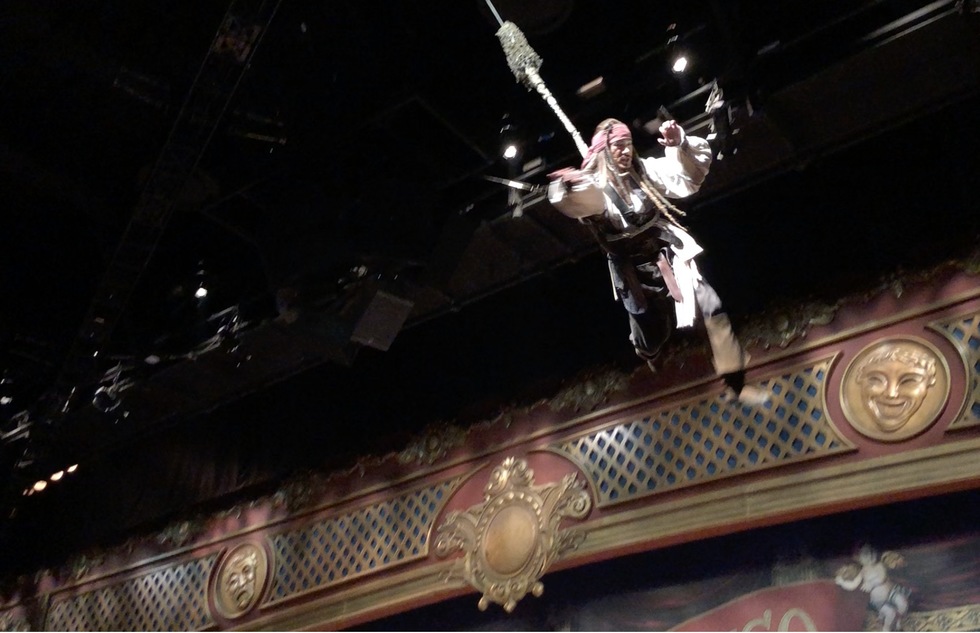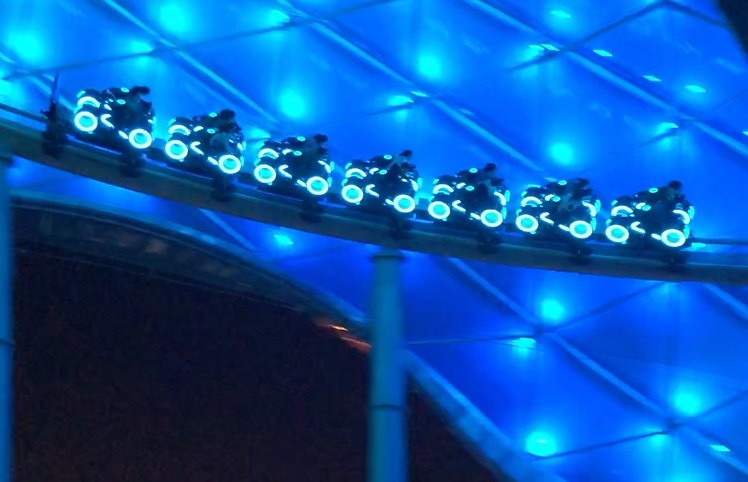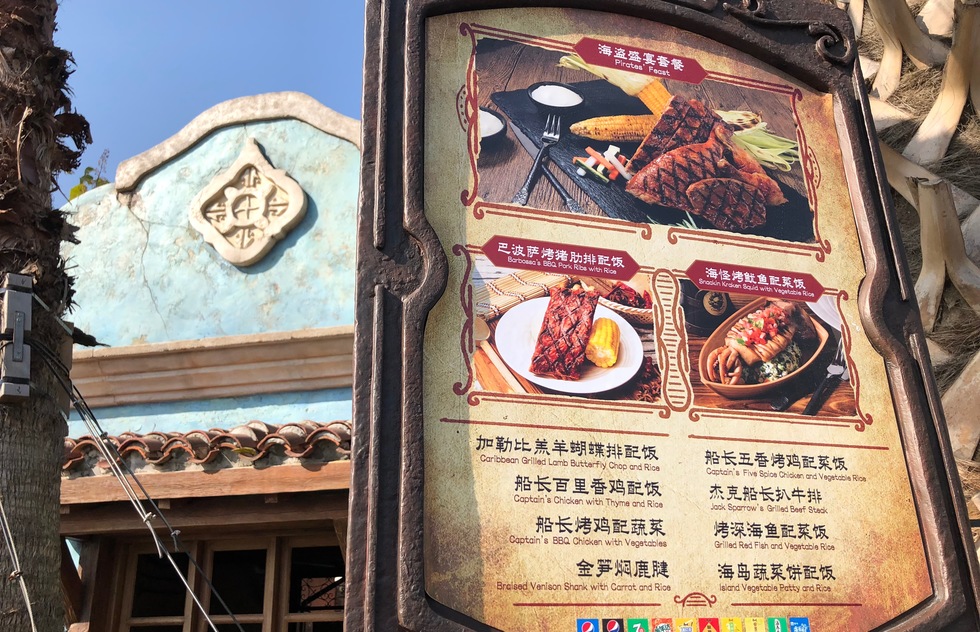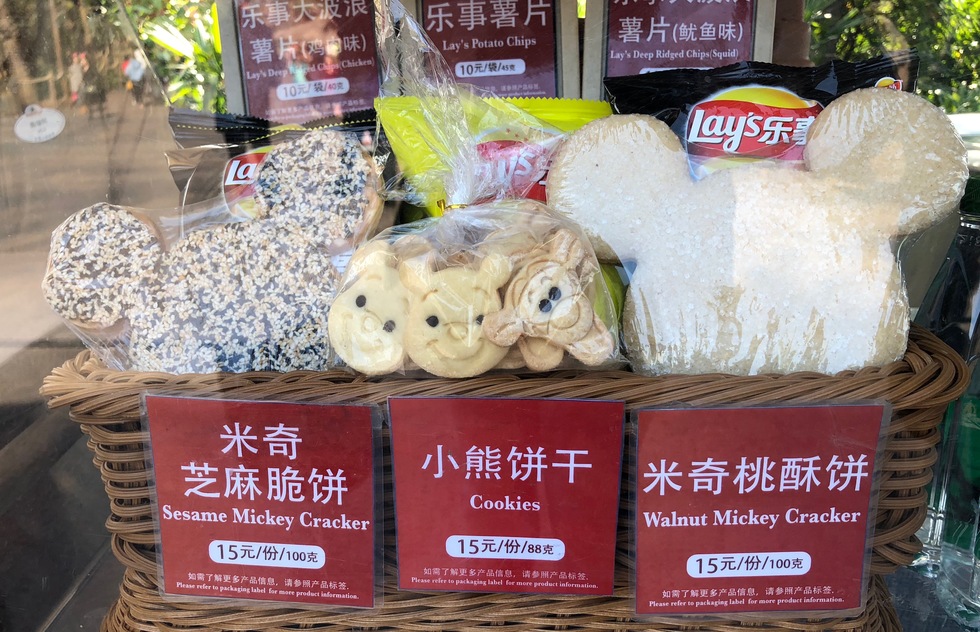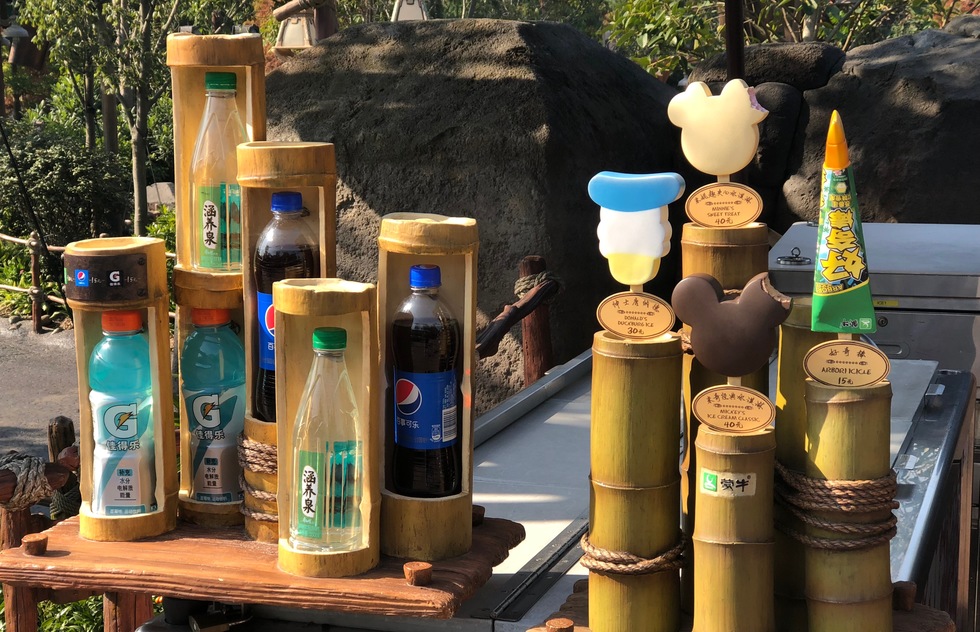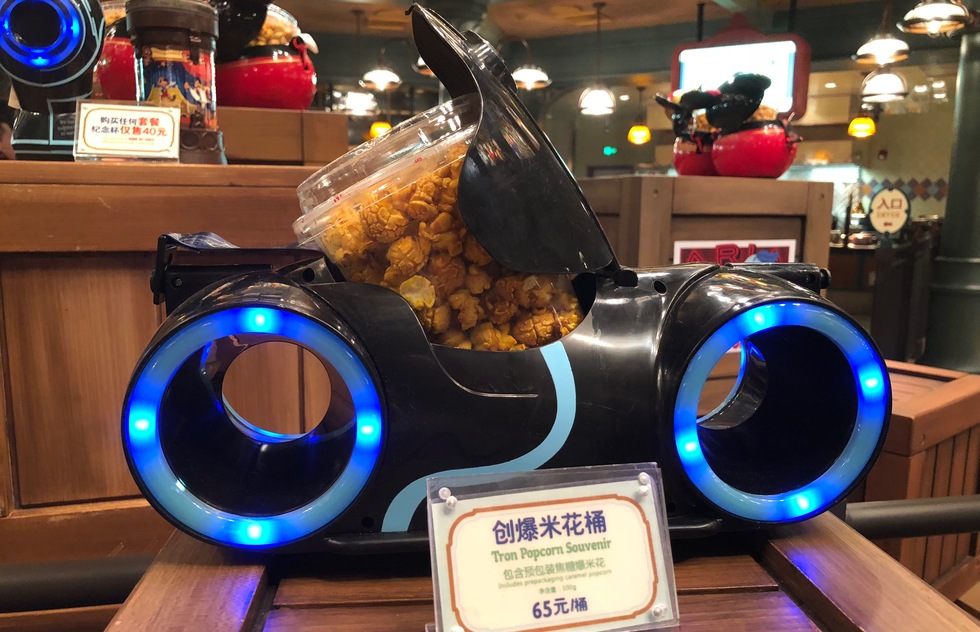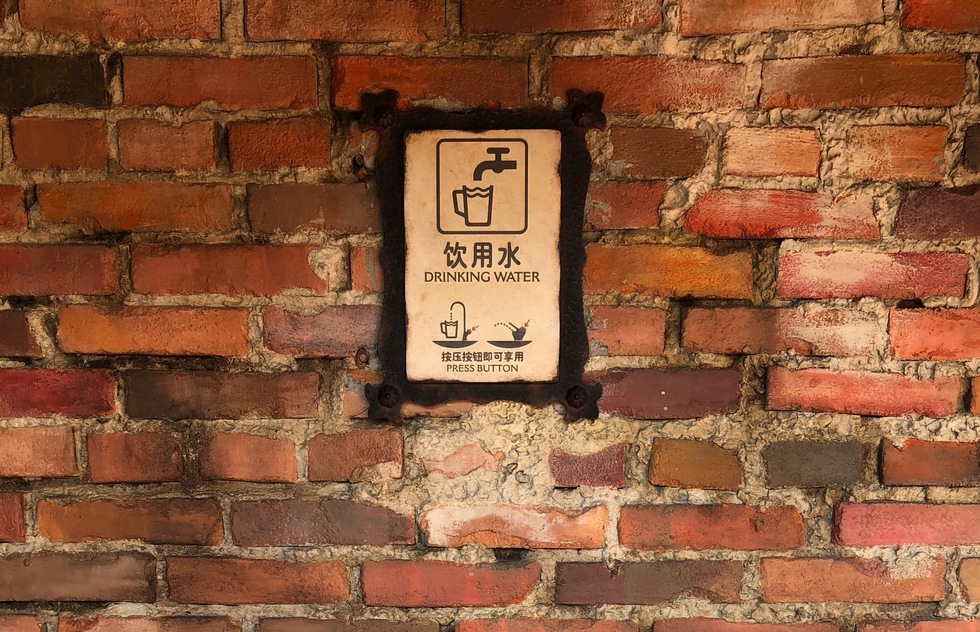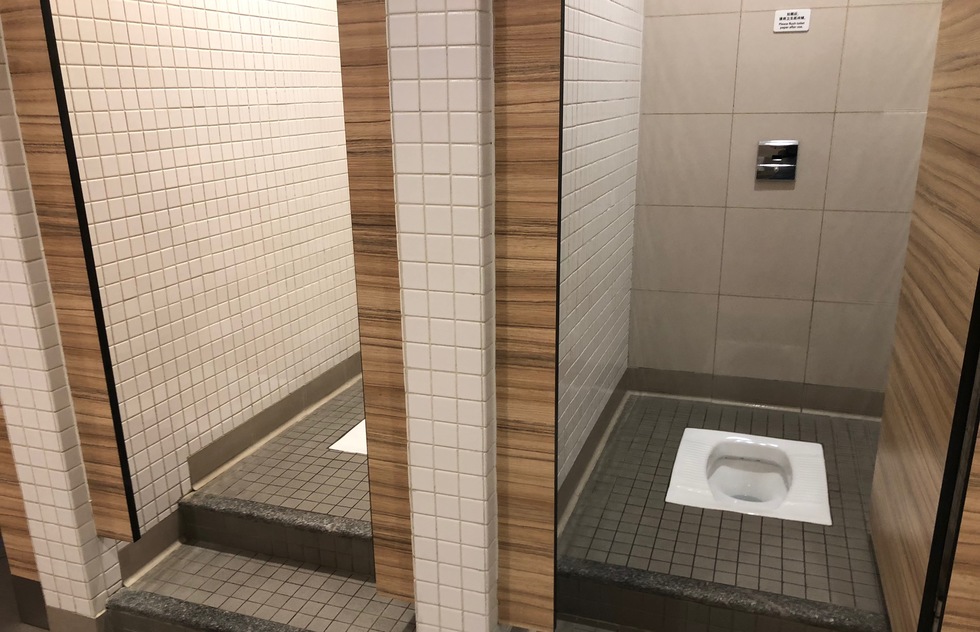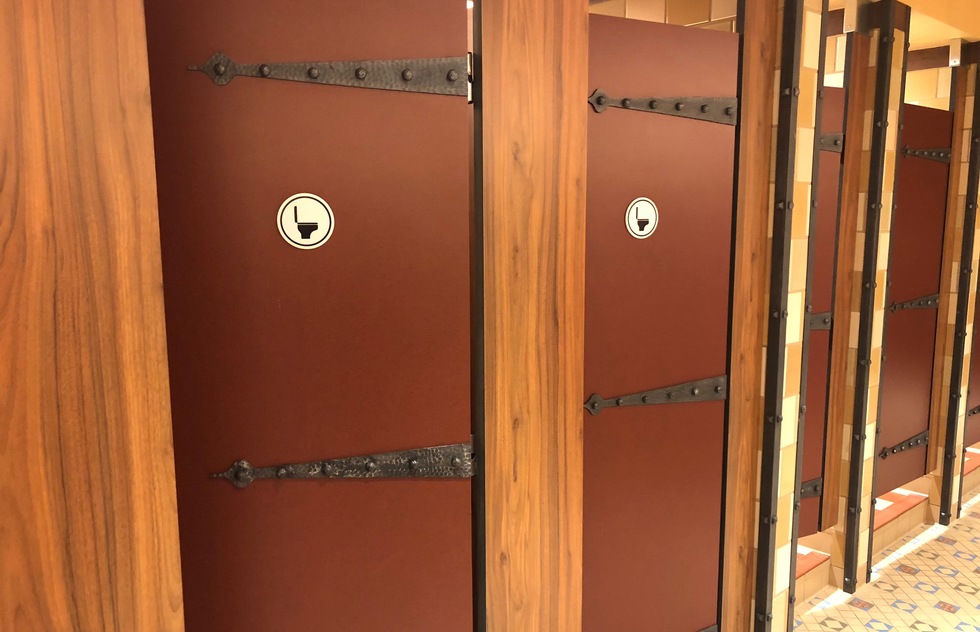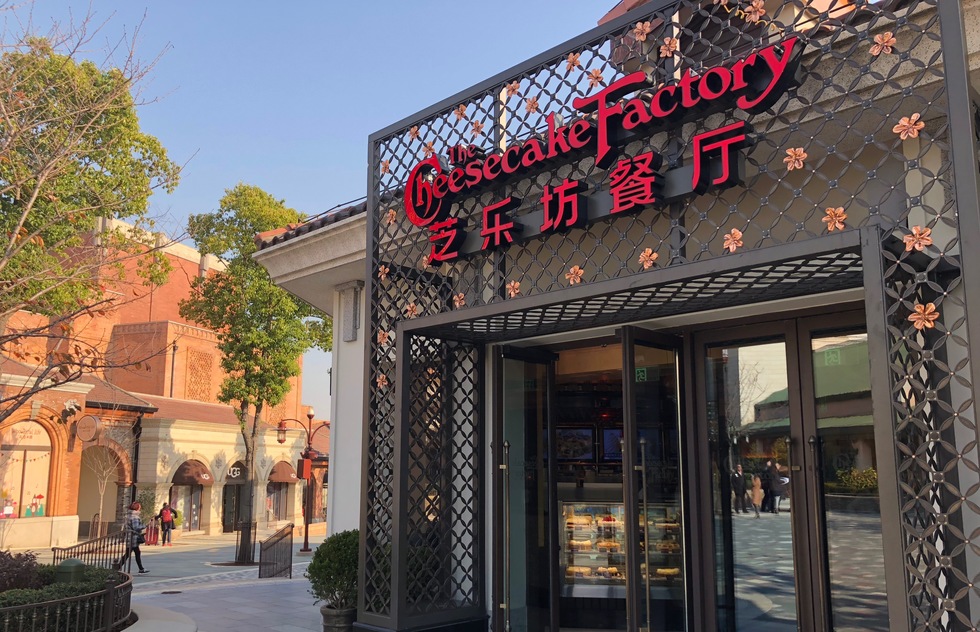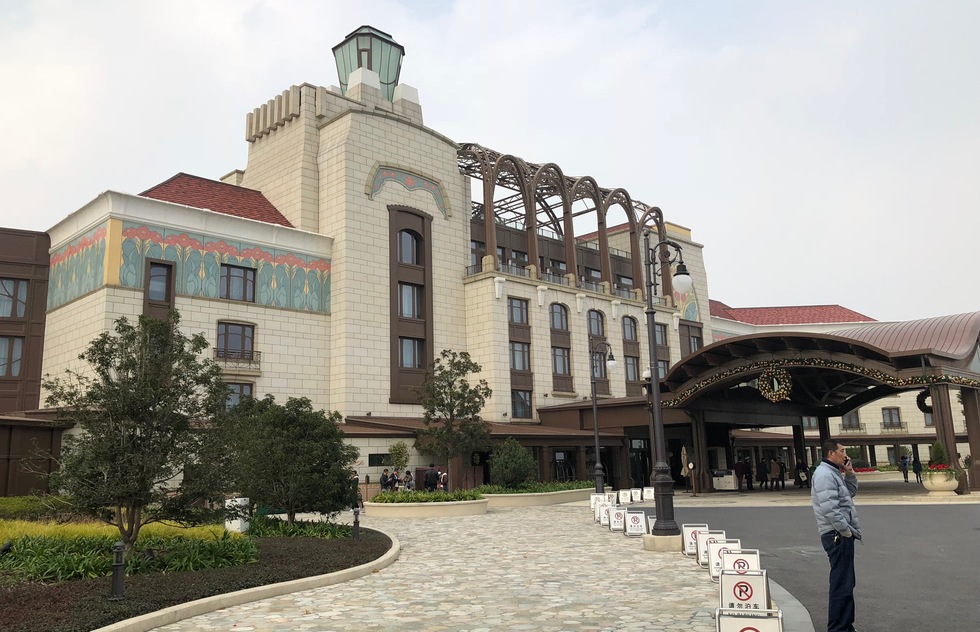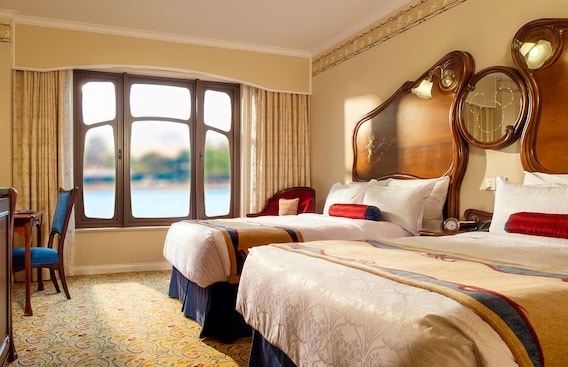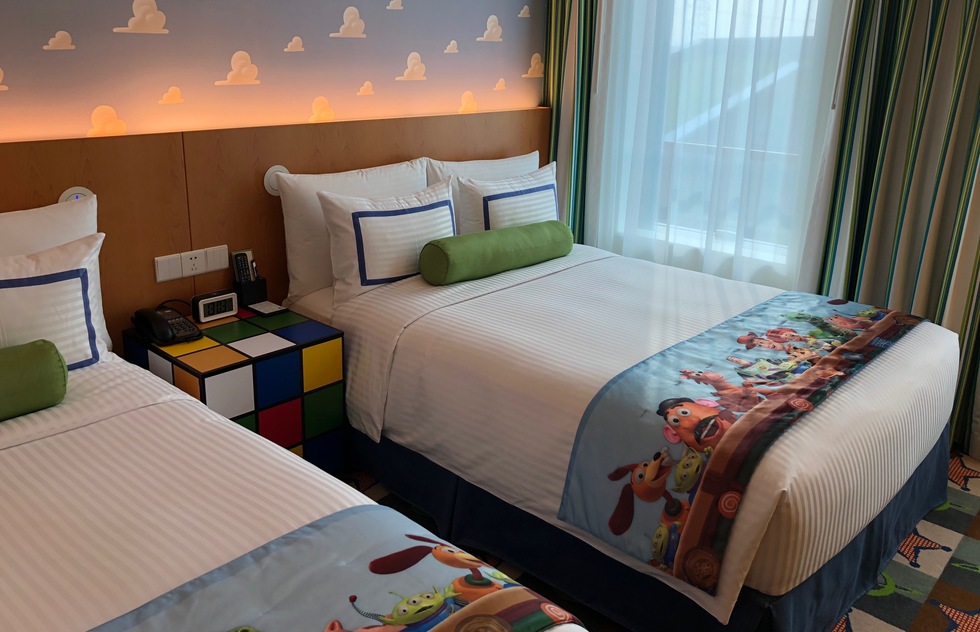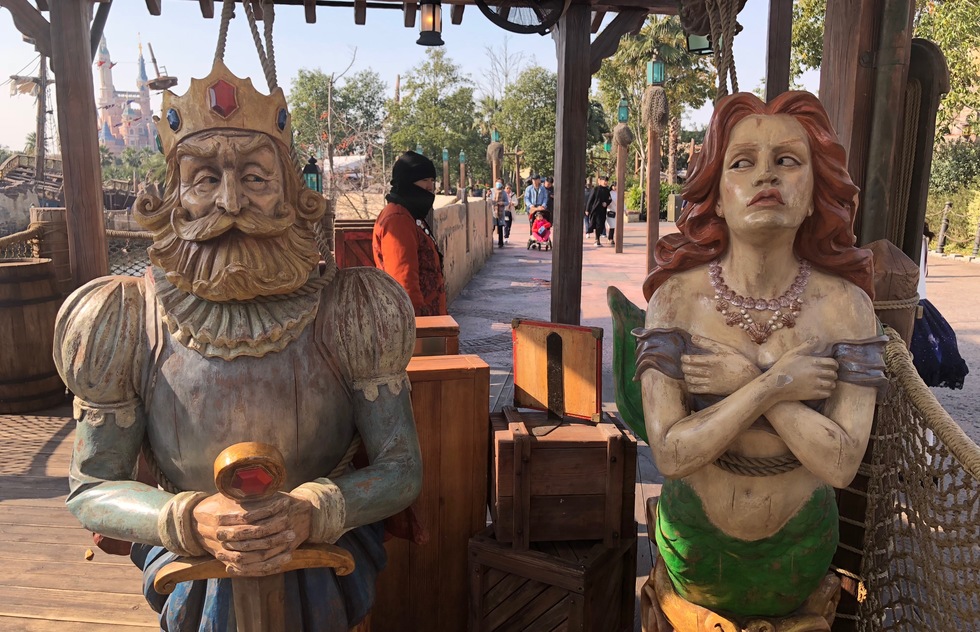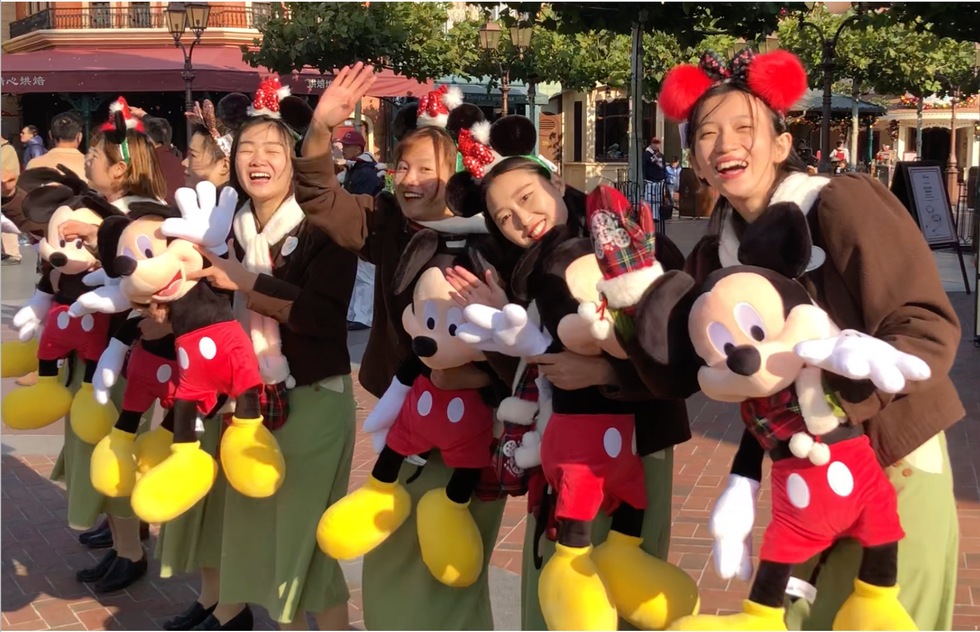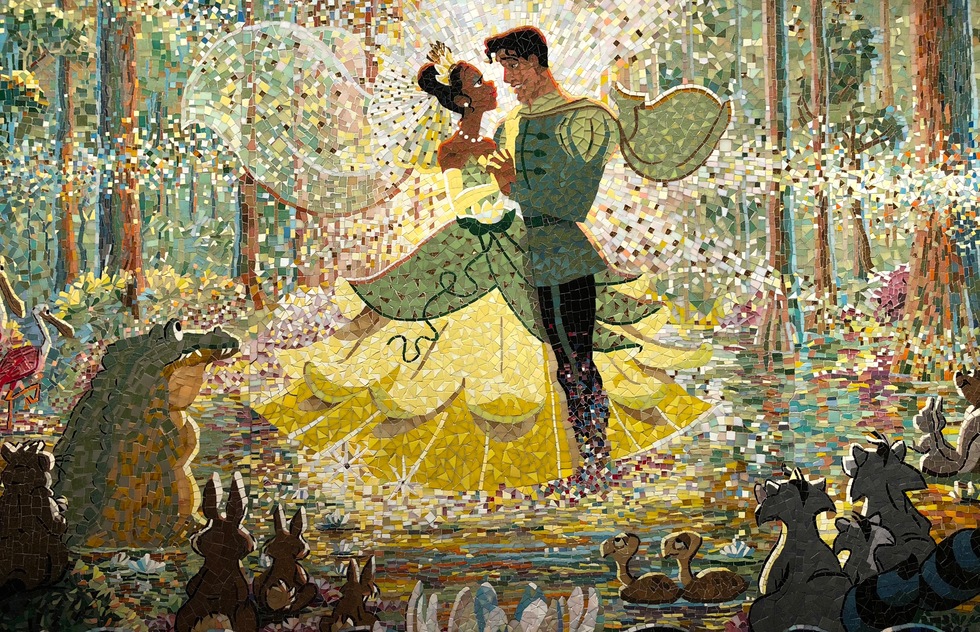Look at How Different Shanghai Disneyland Is from Other Disney Parks
By Jason CochranShanghai Disneyland may be the sixth Disney resort to be built worldwide, but it's the first of its kind. For one, this resort, which opened in the summer of 2016, is in a size category of its own, covering 963 acres, or 11 times the size of the original Disneyland, which opened in 1955 in Anaheim, California. But what's inside is also different. The Walt Disney Company partnered with the Chinese authorities on the nearly $6 billion project, and to convince the government to invite them into the country, Mickey Mouse's masters agreed not to simply clone an existing Disneyland but to create something that is distinctly Chinese in flavor—to give the Chinese, in effect, their own specific version of Disney.
In the first year after its 2016 opening, Shanghai Disneyland welcomed more than 11 million visitors. By tapping into China's mushrooming middle class, the park became an instant smash hit. A big reason is that it's easy to reach. The Shanghai Metro system's Line 11 goes directly to the front gates of the theme park, giving one-fare access to more than 24 million residents of the greater Shanghai area. That's about equal to the entire population of Australia, and all of those city dwellers can reach Disneyland for no more than a basic subway fare. (Shanghai's booming Metro is something of a wonder itself; although it's the world's largest subway system—and growing—in route length, its first station opened only in 1993.)
Chinese workers may have built America's transcontinental railroad, but they didn't build an American railway at Disney—it doesn't exist. There's a railroad in every other Disneyland or Magic Kingdom park, but not in Shanghai. There are a few social reasons that might be behind that: The 1800s weren't a glorious time for Chinese culture, so evoking them isn't high on anyone's list. Railroads may be a wistful symbol of pioneer spirit for Americans, but not for Chinese. When you enter the park, you still pass through the customary tunnel, for effect, but there's no train station above it.
There's also no Haunted Mansion—spirits of the dead are treated with reverence in China, so that wouldn't go over. But other beloved American rides do exist, albeit sometimes in a new form. Soarin' has become Soaring Over the Horizon, featuring the same ride mechanics and the same film as in other versions. At other Disney parks, that film concludes with a flyover of the park guests are visiting, but here, designers were careful to always honor Chinese culture, so the ride climaxes not over a Disney property but with a flight over Pudong, the showplace for modern Shanghai's business and architecture prowess.
One big nod to Chinese culture is the Garden of the Twelve Friends, located in the huge area in front of the castle. Here, each animal in the Chinese zodiac is associated with a Disney character. Some matches, like the Year of the Pig, are easy to make—that's Hamm from Toy Story—but others are a bit of a stretch; I mean, who remembers there were sheep in Mary Poppins' "Jolly Holiday"? The garden is not just a nod to the Chinese belief system but also to a popular Chinese pastime—the spot is designed to be a great place for selfies, so everyone can take photos with the animal that represents their birth year. Shanghai Disneyland is packed with opportunities for photos like this; it's the first Disneyland engineered with social media sharing in mind.
One such gold mine for selfie moments is Fantasyland's Alice in Wonderland Maze, where primary shutter temptations include a goliath version of Helena Bonham Carter's head (playing the Red Queen). It's likely that this walk-through area, on the rear apron of the castle, is a placeholder that will go away as Fantasyland is developed, but in the meantime, it's generating a lot of social media publicity.
The Maze culinates in a tea party table rigged with tricks and movement—it's more smartphone bait that the Chinese audience loves.
The original Disneyland in California is so tiny that the Matterhorn jarringly towers over Alice in Wonderland. At Florida's Magic Kingdom, rides are torn down to make room for new ones. Shanghai Disneyland, though, has learned the hard lessons from other Disney parks and has left plenty of room to grow—so much that it can take 20–25 minutes to walk from one end of the park to the other. If you want to reach Tomorrowland, it will take you until then to skirt this field. Once you reach your futuristic destination, you'll notice that its design bears a not at all accidental resemblance to the walkways of Pudong, where the city's tallest skyscrapers are. The Chinese authorities believe they're already building the best of the future right in downtown Shanghai.
The massive Enchanted Storybook Castle that dominates the park's core serves multiple functions: It houses shops, a restaurant, a gorgeous multilevel atrium, a character meet-and-greet, part of a ride, a walk-through diorama story about Snow White, and a stage for frequent shows. This Disneyland ameliorates the cramped conditions around its sister castles, and is the first one to actually include an amphitheater to handle all the crowds that gather to watch performances and pyrotechnics here.
Treasure Cove is a land that no other Disney park has—it's an intensely themed port with a marina for two full-size (but permanently docked) ships. The banner ride here is Pirates of the Caribbean: Battle for the Sunken Treasure. Leaving the storyline of the classic attraction behind, this high-end ride—a blend of giant screens, precise boat movement, illusions, huge sets, and more Johnny Depp appearances than you can shake a doubloon at—is purely based on the movies.
I mean, look at the depth of this detail and charm. It's enough to make an American feel ripped off about their own Disney vacation memories. If Tomorrowland and Fantasyland are only halfway-conceived and built as of yet, Treasure Cove is fully formed, and every yuan spent is on display.
In a callback to a Chicken of the Sea restaurant ship that once dished out tuna burgers in the middle of California's Fantasyland, the Siren's Revenge is a walk-through, full-size pirate ship that's tricked out with talking screens and hands-on gags. More photo ops!
Ever since California's Disneyland built the Matterhorn to conceal an ugly support tower, Disney has become known for building themed mountains, be it Splash, Space, Big Thunder, or Everest. Shanghai's unique entry is Roaring Mountain, the centerpiece of an area that's also only found in China, Adventure Isle. This land, which has a more jungled-up vibe than Adventureland in the other parks, sits in the spot that Tomorrowland usually occupies—to the right as you enter. Roaring Mountain's chief attractions are the Challenge Trails, which are three walk-through obstacle courses—guests strap themselves in with harnesses and safety lines and clamber through and around the mountain over water, ropes, and cliffs. Can you imagine tourists in hot and humid Orlando opting for such physical exertion?
Roaring Mountain's thrill ride is Roaring Rapids, a drenching group float on a round boat that's stylistically similar to the river courses of Orlando's Kali River Rapids and Anaheim's Grizzly River Run. Except this one is better and more terrifying, passing through a dark indoor section where a spectacular animatronic of a crocodile-like monster, called a Q’aráq ("Croc"), snaps its massive jaws at passing boats.
The Chinese market also likes live shows more than Western guests do. Tarzan gets an acrobatics spectacular, Frozen gets a sing-along, and a 1,200-seat theater hosts changing Disney musicals. But Jack Sparrow, as always, grabs the gold. His "Eye of the Storm: Captain Jack’s Stunt Spectacular," mounted in a beautiful riff on a Baroque European playhouse, is the most lavish. All Shanghai Disneyland staff members speak English—it's a job requirement—but that doesn't extend to the shows. They're usually entirely in Chinese, so many foreign tourists won't understand a word (the pirates seem like a laugh riot). But if you do speak the language, you may notice there's a hidden cultural message in Sparrow's dialogue: He's speaking Putonghua, the standardized form of Mandarin, based on Beijing pronunciation, that is the official language of China. So in Shanghai Disneyland, that rebel renegade Jack Sparrow actually speaks like a model patriot.
Instead of Space Mountain, the Chinese were granted a thrill ride that no other park had: Tron Lightcycle Power Run is ridden hunched forward, the way you ride a bike, and it soars under an illuminated canopy at a searing 60 mph (97 km/h). It's so fun that Florida's Magic Kingdom will receive a version of its own for its 50th anniversary in 2021.
Although menus always have something familiar to Westerners (in winter, there's salted caramel hot chocolate), they also have dishes that are more common to Chinese palates—in this case (at Barbossa's Bounty in Treasure Cove), squid and venison. If the idea of chewing grilled calamari at a theme park doesn't seem magical, at least diners do it at this restaurant with a view of the Pirates of the Caribbean ride's boats drifting by—a nod to the Blue Bayou dining area in California's Disneyland. Vegetarians will have a harder go than meat eaters, but there's usually something available.
There's popcorn, of course—every Disney park indulges in that—but carts also sell other savory crackers and treats, many of which have specific appeal to local palates. The Lay's potato chips in the back row above come plain or flavored with chicken or squid. Such hybrid flavors—familiar foods with a light Asian twist—make for an easy introduction to Chinese cuisine: Merlin's Magic Recipe in Fantasyland does mapo tofu, a Szechuan tofu dish with a thick spicy sauce, and Spiral Snacks in Tomorrowland serves "potato gems with meat floss," which are like tater tots with light, almost fluffy, shredded meat on top. Some Chinese customers are also diving for the first time into Western dishes: American theme park stalwarts like corn dogs, pizza, burgers, and giant turkey legs are all on the menus, too. Somewhere in the middle, there are worldwide favorites like giant spring rolls and waffle ice cream cones.
Pepsi, of course, and bottled water, naturally. But in addition to the famous Mickey Premium Ice Cream Bar, you can also buy a Donald Duck Duckberg Ice, a fowl-themed fruit popsicle.
Many Disney Parks souvenirs are boring and unchanged no matter where you buy them—corporate standardization has beaten the specificity out of much park inventory. But the shops still have some items you can only find in Shanghai, especially ones themed to lands or rides that don't exist elsewhere. Here's a Tron Lightcycle-themed light-up popcorn holder that will make American Disneyana collectors light up with envy. Chinese customers aren't as blindly consumerist as Americans, and many of their purchase choices are about gift-giving and not collecting. While customers at Hong Kong Disneyland snap up fancy tins of cookies to present to friends and relatives, visitors in Shanghai are particular to tiny key chains, which are cheap and easy to give as gifts.
Unfortunately, it's not safe for Westerners to drink Shanghai's water directly from the spigot. But unlike everywhere else you'll go in China, Disneyland takes pains to warn you of that practicality, furnishing a separate, clearly marked system of potable water taps. If you're staying in one of the resort's hotels, you get bottled water for free.
Don't be alarmed, but this is the style of toilet that Chinese people are familiar with. It's called a "squat toilet," which is all I feel comfortable saying about how to use it. On the bright side, this being Disney, the facilities are spotless. Nowhere else during your trip to China will you find a squat toilet that is so well-kept.
Not to worry—Disney knew you might come, so every bathroom has some throne-style commodes, too. Just for you.
Anaheim has Downtown Disney, Orlando has Disney Springs, Disneyland Paris has Disney Village—but in China, the dining-and-shopping area next door to Disneyland is called, sort of logically, Disneytown. Club 33, Disney's legendary private club open only to those who can afford to pay (or, here, Chinese government officials) is hidden behind a door marked "33" found between Disneytown and a side entrance to the theme park. Disneytown is big on big chains, and most of them are Chinese, but strangely, it's also the only Disney shopping area in the world where you'll find a Cheesecake Factory. So in an odd way, even the Cheesecake Factory is uniquely Chinese here.
There are two hotels on resort property. The Disneyland Hotel (pictured above) is the luxury-level one—marble lobby with a bar, towel animals on your bed at turndown time, piped-in bamboo scent (oh, Disney)—and it's right across a small lake from the park gates. The most expensive rooms glimpse the castle from afar. You can either catch a ferry or a shuttle bus to the park gates.
Disneyland Hotel rooms (pictured) aren't enormous, but they're tastefully decorated in a mild classical-music theme, and they have Western-style toilets. There's a ground-floor restaurant for character breakfasts, a fine-dining restaurant on the roof that's well-placed for fireworks views, and an indoor pool (although, weirdly, everyone who takes a dip has to wear a hairnet). The only views of the park on resort property are from premium rooms, which cost US$325 and up.
The "budget" choice is the other property, Toy Story Hotel. Here, there are no substantial park views (you might see the back of the Tron building) and the only park transportation is by bus. It's a strange building—glassy and charmless from the outside like an office park, but seen from above, it's in the shape of the infinity symbol—the better to satisfy Chinese feng shui. Rooms are either gently Woody- or Buzz Lightyear-themed, but they're essentially the same. The restaurant is a food court, and there's no fine dining or character breakfasts, although Woody and Jessie often appear in the common areas. The kids' club, which is free for kids aged 2 to 12, dabbles in Chinese amusements like calligraphy lessons and watercolor painting. Guest rooms start around US$135.
There's a lot more to the resort than this—a Toy Story-themed zone with kiddie rides, a technologically complex Pirates of the Caribbean ride in a motorized boat, an expanded version of Peter Pan's Flight, a Seven Dwarfs Mine Train coaster that improves on the swoopiness of the Florida original. This photo op is in Treasure Cove.
There are parades, too, as there are at nearly all Disney parks. In China, the shopgirls emerge from the souvenir stores at the top of Mickey Avenue (China's version of Main Street, USA, stripped of specifically American cultural nostalgia) with their wares and party along with guests to the beat of the music. It's cute: Disney cast members who aren't there to inform you that you have to move somewhere else!
Like its mammoth castle, Shanghai Disneyland is big. For Americans used to the original parks, that can make it less charming, but there's still some fascination in observing the cultural twists and new executions of familiar attractions. And despite its size, the park can still get very crowded. The best time to go is outside of weekends and holiday periods, when families are off work and numbers swell. For shorter waits, think early December, springtime (not including Chinese New Year), and fall weekdays. And also remember that you can cut costs by staying at a hotel in town; the Metro rolls to the front gate every 10 minutes, and it only costs about US$1.
(Photo: The Princess and the Frog Mosaic in Enchanted Storybook Castle)





